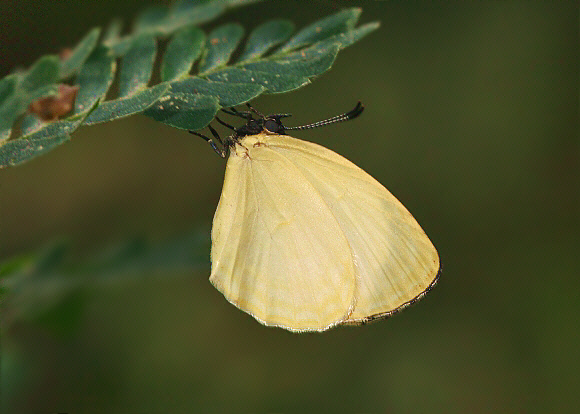
Introduction
The subfamily Lipteninae is wholly African in distribution, and comprises of no less than 600 species, varying from the tiny creamy yellow Liptena xanthostola to the almost blindingly bright metallic blue Epitola posthumus – a species which with a wingspan of 65mm is massive by Lycaenidae standards.
The Lipteninae are fascinating because of their association with “ant trees”, i.e. trees which support colonies of Crematogaster ants. As with most other Lycaenidae species, the caterpillars of Liptenids have ants in almost constant attendance. The ants “milk” a sugary substance from a gland on the caterpillar’s back, and in return for this reward the caterpillar benefits because the presence of the aggressive ants deters other insects such as wasps and flies that would otherwise attack them.
The genus Liptena comprises of 65 known species, all of similar size ( circa 35mm wingspan ), but varying in colour from pure white to yellow, orange or black. Some species such as pearmani have only very feint markings, while others are strongly patterned with dark wavy lines, spots or patches of reddish-orange.
Liptena pearmani is one of about half a dozen cream coloured species, most of which have a dark apex on the upperside. It is a rare butterfly, found only in the Volta / Togo mountains of Ghana and in western Nigeria. The image above apparently is the only existing photograph of this species.
Habitats
This is a rainforest species, and tends to be encountered along the minor tracks and paths in denser parts of the more intact forest blocks. It is found at altitudes between about 100-500m.
Lifecycle
The caterpillars browse on the trunks of their “ant-trees”. These trees can be any one of a number of species from different plant families. There is conjecture about what exactly it is that the larvae feed upon – e.g. some writers consider them to feed on lichens, while others insist it is blue-green algae. It may even be the case that they feed on microscopic fungi, and it is possible that ants play a part in cultivating these fungi.
Adult behaviour
The butterflies behave similarly to most other small Liptenids – they spend long periods at rest, sitting at the tips of leaves or tendrils with their wings held erect. Periodically they fan their wings in such a way that the apexes of the forewings meet underneath the abdomen. This is done in a very deliberate way which appears to indicate that it is some sort of signal, and at least one writer has suggested that the butterflies may be signalling to the ants. It seems more likely however that the behaviour serves a simpler purpose, e.g. it may be necessary to invert the wings in this way to facilitate the release of pheromones to attract mates.
